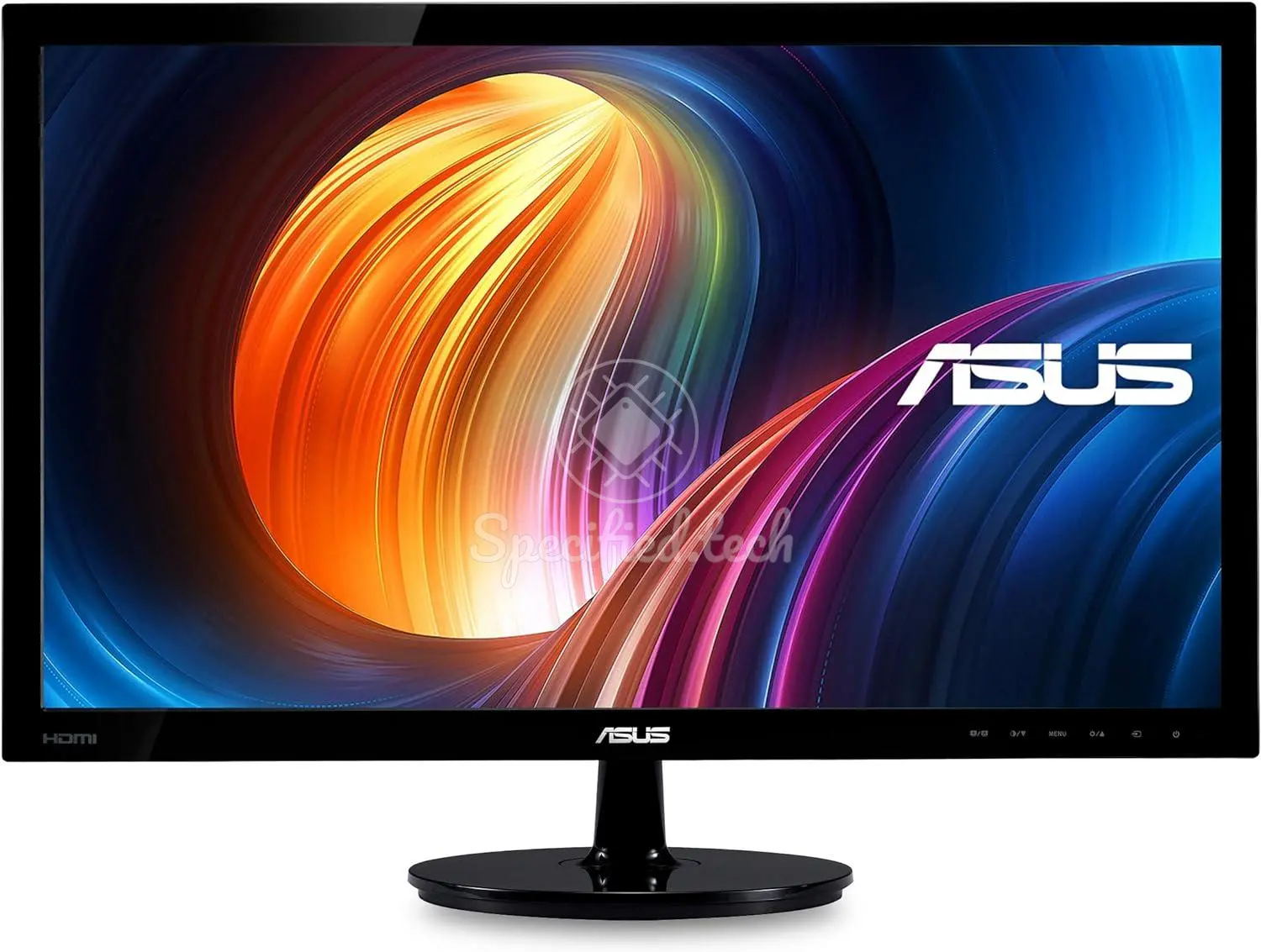
Today we will look at the monitor VS247H-P from Asus from the year 2012. Within this article, we will first take a closer look at the most important feature of a monitor -the display-, then the design, and in the next section we will go into the features of the monitor. Of course, power consumption, certifications, connectivity and other important details will also be considered.
Display
Any multimedia content can be displayed on 23 inches ( 59.9 cm on the diagonal). Let's keep it short and sweet. The monitor has an aspect ratio of 1.778 : 1. The display is a TN panel. The panel has a resolution of 1920 x 1080 px. The pixel density is 93 ppi. The pixel pitch is 0.272 mm. The continuous possible brightness specified by the manufacturer Asus is 300 nt. The panel is illuminated by W-LED. The built-in panel ensures stable color reproduction of the image, even at deviating viewing angles, by means of its 170 ° (horizontal) viewing angle. Asus promises stable color reproduction moreover within a 160 ° vertical angle. The refresh rate is horizontally seen at the VS247H-P 30 khz to 80 khz. Vertically, however, the image renews at a minimum rate of 55 hz up to 75 hz. The analog refresh rate of this monitor is 30 khz to 80 khz. The frame rate in the analogue range is vertical at the VS247H-P 55 hz to 75 hz. The minimum response time of the monitor is ms. The average response time of the monitor is about ms. The display panel is Anti-glare/Matte (3H).
Color representation
The panel has a bit depth of 8 per color channel, but what does that mean? The number of bits determines how many colors can be encoded for the individual pixels of the display. For an 8-bit panel, for example, this is 256 different colors (2^8 = 256). However, since we usually display three different colors per pixel at the same time, in theory about 16 million (256^3) different colors are possible by mixing the three pixels. A 10-bit panel could even display a billion colors. According to the manufacturer, the coverage of the NTSC 1953 color space is 72 %.
Contrast ratio
Contrast ratio is a common measurement used to represent the maximum relative differences in brightness between black and white. It describes the ability of a screen or projector to produce a high-contrast image and is the quotient of the maximum and minimum displayable luminance. The higher the values are away from each other, the stronger the quantitatively seen difference between black and white is set up, which in turn results in an improved image quality. This monitor from Asus has a static contrast ratio of 1000 : 1 , according to the manufacturer. In contrast to the static contrast ratio, the dynamic contrast ratio changes the brightness of the panel itself in addition to the difference measurement from black to white. In addition to the difference between the brightest and the darkest pixel, the backlight is thus changed. Since the brightness of the panel may not be able to be adjusted exactly to a single pixel, a so-called halo effect is possible. The value of 50000000 : 1 of dynamic contrast ratio for the monitor VS247H-P cannot provide any information about the severity of the halo effect here. Therefore, it is more useful to compare the static contrast ratio.
HDR
The monitor supports all HDR modes listed here:
screen design
The size of the monitor (stand included) is 41 x 56.1 x 20 cm (HxWxD). The device weighs 4.4 kg with the stand in place.
Rotate, tilt and swivel
The monitor from Asus cannot be rotated. The monitor cannot be swiveled. This feature could be retrofitted with a third-party stand. The monitor VS247H-P can be tilted. The angle of inclination to the rear is 20. The monitor can be tilted forward by 5 degree.
Ports
The monitor can be connected via 1 VGA ports.
camera
This monitor does not have a camera.
Features
- The display/monitor supports Frame Rate Compensation.
Panel manufacturer
Many manufacturers of monitors and TVs fall back on third-party manufacturers, such as Samsung or LG, when choosing the actual display (panel). Thus, many of the monitors have the same panel and, conversely, differ only in their design, additional functionalities, the software used and, of course, the price. Two monitors from Asus or another manufacturer with an identical panel do not necessarily have to have the same picture quality, but it is usually a first indicator for a purchase decision. The panel used here is originally from Innolux and has the model number M236HGE-L20.
Power consumption
The maximum power consumption (peak) specified for this monitor is 33 w. In standby mode, the device consumes approximately 0.5 w. When switched off, on the other hand, the monitor consumes only 0.5 w. In ECO mode, the monitor consumes 15.63 w. The monitor can be operated on a 110v power supply. The monitor can be operated on a 220v power supply. The power grid has to supply a frequency of 50 hz to 60 hz.
Environment
The maximum permissible ambient temperature is 50 °C during operation. Below a temperature of 0 °C , the monitor from Asus should again not be used. The maximum storage temperature should be according to Asus 60 °C. Minimal were given by Asus 20 °C.
Further information
- 100x100

